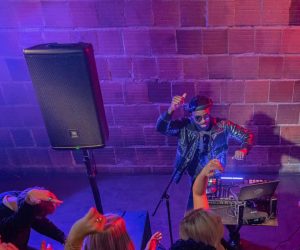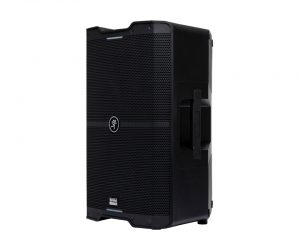
The Professional Voice: Flood
The victory of the DAW, and corresponding decimation of the cost of pro audio equipment was one of the main factors behind the collapse of the commercial studio industry. This whirlwind of closing studios, lowering recording budgets, improving digital audio sound quality and endless options and effects at the press of a button, turned the worlds of all engineers, mixers and producers upside down. Throughout this issue, Paul Tingen asks nine of the world’s leading studio practitioners to elaborate on what has changed for them since 1998, homing in on the pieces of gear they consider to have been game changers, and the working methods they use today, which they didn’t in 1998.

FLOOD
U2, Foals, New Order, Nine Inch Nails, Depeche Mode, Erasure, Nick Cave and the Bad Seeds, P J Harvey, Sigur Rós, The Smashing Pumpkins, The Killers.
Together with Alan Moulder, British producer/mixer Flood (aka Mark Ellis) co-owns Assault & Battery Studios in north-west London. Flood, who has won one Grammy Award, mostly works from Assault & Battery Studio B, which is one of London’s prime tracking studios, sporting a Neve VR60, ProTools HD3 Accel, Quested and ProAc Studio 100 monitors, as well as tons of outboard gear and musical instruments. Studio A is most frequently used by Moulder, and built around an SSL G+ SL4000 and stacks of outboard.
Flood: “One of the biggest changes since 1998 is that recording studios are so in decline, and with that, the opportunities for people to train as engineers. One of the most important things Alan and I have done at Assault & Battery is to make sure that we have a training program. Many people go to college and learn some techniques and off they go, and then do everything in-the-box, often working alone. This works for some things, but it’s not the same as having obtained a full grounding in all aspects of recording and mixing while working in a studio. It takes total dedication to become a good engineer or producer, and there’s no substitute for experience and having worked in loads of different types of sessions and with different media. I also think human interaction and instant reactions to what’s happening in the studio are important. I really like to have the band in the room when I’m mixing, but because many people work on their own now and send files via the internet, this is starting to get lost.”
GAME CHANGERS
PROTOOLS HD,
PROAC STUDIO 100,
NEW MICROPHONES
“The changes in my own approach over the last 15 years depend on whether I’m recording or mixing. 15 years ago I would have used analogue tape as a first port of call when recording, even though I also carried a small ProTools rig. HD did change a lot of things, and now pretty much everything is recorded straight to ProTools. Having said that, we have two 24-track tape machines at the studio [Otari MTR 90 MkII and Studer A800 Mk3], and I try to use them as much as I can, and then dump everything into ProTools. In 1998 I would also only have used hardware effects when recording, and then for a long period I was trying out plug-ins, and now I’m almost back to where I started, almost only using outboard. But when mixing, in 99 out of a 100 cases I’m using ProTools, though ideally I still like to lay everything out over the board. I also still like using hardware effects when mixing, but this is not always possible, and there are quite a few albums that I have mixed in the box.
“Another huge change for me is that I never use the NS10 monitors anymore. I always used them, because they were great workhorses. You could thrash them all day long. But unless you had a really good pair and a great amp and a good-sounding room they were bass light and pushed the upper mids. I really like the ProAcs, and I think they’re also suited to the fact that the way people listen to music now has changed. In 1998 most people listened to hi-fi speakers and in the car, but today it’s often either headphones or laptop speakers. So you need to mix on monitors on which you can tailor your mixes to all those playback formats.
“Another development that has opened up a whole new way of recording for me are the new microphones that have been released by a whole slew of new manufacturers, like Sontronics, AEA, and Blue Microphones. For example, I always used to use one mic on a guitar cabinet, but will now use a Shure SM58 and a ribbon, like the Sontronics Sigma or Delta or the AEA R84. Finally, mixing in stems is definitely one of the most important new mix developments. Computer savvy artists can then work with your stems and do their version of your mix, and the end result can be a very different type of mix. I also use parallel compression a lot more than in the past, though I find that compression is over-used these days as a quick fix. I shy away from heavy compression and also limiting. I’ve asked mastering engineers to back it off to make sure a bit of headroom remains. A lot of stuff released today sounds impenetrable, because it’s over-limited, and also because of over-use of soft synths and stereo plug-ins during the mix. If you use one or two soft synths or plug-ins they can sound great, but if you put loads of them together everything starts to sound the same.”
















RESPONSES